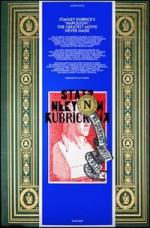|
This section contains 191 words (approx. 1 page at 300 words per page) |
American filmmaker Stanley Kubrick's ambitious and evocative works include widely acknowledged masterpieces like Dr. Strangelove (1963), 2001: A Space Odyssey (1968), and A Clockwork Orange (1971). Kubrick began making films in 1951, borrowing money from family and friends to produce a short documentary called Day of the Fight. Nine years later, he was brought in by Kirk Douglas to replace director Anthony Mann on the set of the Hollywood blockbuster Spartacus. But this experience frustrated Kubrick, and it would be the last time that he worked on a film without total creative control. In 1960 he moved from New York to London and began tackling topics of exceptional breadth and cultural concern. Over the next ten years he effectively stamped subjects like the Cold War, the ambiguities of violence, and the limits of human consciousness with his uniquely powerful screen images. Although critics unanimously praise his technical mastery, many remain baffled and outraged by his disturbing narratives.
Further Reading:
Ciment, Michel. Kubrick. Trans. Gibert Adair. London, Collins, 1983.
Falsetto, Mario, editor. Perspectives on Stanley Kubrick. New York, G. K. Hall, 1996.
Kolker, Robert Philip. A Cinema of Loneliness. New York, Oxford University Press, 1988.
|
This section contains 191 words (approx. 1 page at 300 words per page) |


